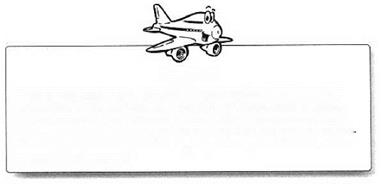We’re Rolling Now
The last major component that makes up an airplane is the landing gear. Landing gear generally comes in two types: tricycle configuration or the more traditional conventional pattern.
Tricycle Gear
Tricycle gear is so named because its wheel configuration resembles that of a child’s tricycle—that is, it has one lead wheel near the plane’s nose and two main wheels behind it under the wings. Tricycle gear has become the most popular configuration in most planes rolling off of modern assembly lines because they make landing easier. The technical reason is that the airplane’s “center of gravity,” the point at which the plane would balance like a seesaw if placed on a fulcrum, rests between the main gear and the nose gear in a tricycle – gear airplane.
In practical terms, it means that tricycle-gear airplanes are more stable during landing, and any swerving caused by wind or poor control technique would tend to stabilize when the pilot steps on the brakes.
Tricycle gear also makes for better forward visibility when the airplane is taxiing on the ground, having a more level attitude than the conventional type.
 Plane Talk
Plane Talk
Airplanes are equipped with other types of landing gear besides wheels. For example, some airplanes can be transformed from a land plane to a seaplane simply by removing the nose wheel or tail wheel and attaching floats in place of the main gear. For flying into snow – and ice-covered terrain, pilots can attach skis to the gear. Even tires are versatile: Normal narrow tires are good for landing on paved runways and fat "balloon" tires are ideal for landing on grass.
Conventional Gear.
As its name suggests, conventional gear is the older style that was a tradition in aviation until the past few decades. In addition to the main wheels under the wings, this configuration features a third wheel under the airplane’s tail. The tail-down attitude caused by conventional gear makes the nose stick up high enough to obscure the pilots view while she’s taxiing. It also demands extra skill from a pilot during landing, especially in a crosswind.
In a conventional-gear airplane, the center of gravity is located behind the main landing gear, a less stable setup than in the tricycle-gear airplane. The result is an airplane that (as old-timers joke) the pilot has to keep flying “until it’s parked and the wheel chocks are in place.”
Because conventional gear reminds a lot of pilots of the “good old days,” conventional-gear airplanes are still popular. Some pilots won’t even consider buying anything other than a “tail dragger,” even if they are somewhat more demanding to fly.











